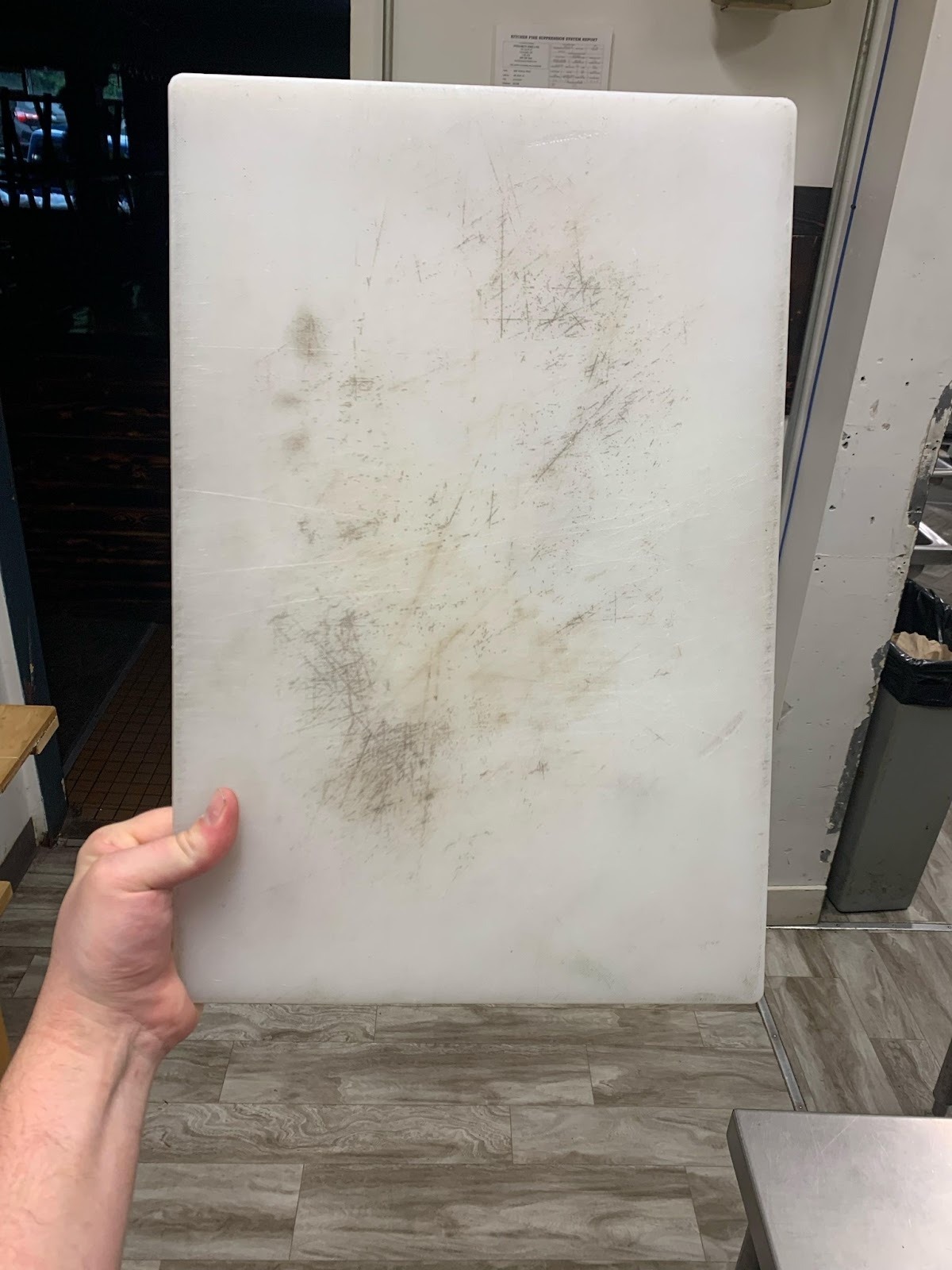ADVERTISEMENT
Plastic cutting boards are essential tools in the kitchen due to their durability, affordability, and ease of care. However, improper cleaning and maintenance can lead to bacteria buildup, stubborn stains, and unpleasant odors. Proper care ensures food safety, hygiene, and the longevity of your cutting boards. This guide will walk you through effective cleaning methods and tips to keep your plastic cutting boards in top condition.
1. Routine Cleaning After Each Use
Cleaning your plastic cutting board immediately after use is key to preventing food particles from drying and becoming difficult to remove.
Materials Needed:
Dish soap
Warm water
Sponge or soft cloth
continued on next page
ADVERTISEMENT
ADVERTISEMENT
Steps:
Rinse the board under warm water to remove any loose debris.
Apply a few drops of dish soap directly onto the surface.
Scrub thoroughly with a sponge or soft cloth, paying special attention to any grooves or knife marks where bacteria may linger.
Rinse the board with warm water to remove soap residue.
Dry the board completely with a clean towel or allow it to air dry upright to prevent moisture buildup.
2. Deep Cleaning to Remove Stains and Odors
Over time, your cutting board may develop stains or absorb odors, especially after cutting foods like tomatoes, beets, garlic, or fish. Here are two effective methods for deep cleaning.
Using Baking Soda and Vinegar
Materials Needed:
Baking soda
White vinegar
Scrubbing pad
Steps:
Sprinkle baking soda generously over the cutting board.
Pour white vinegar over the baking soda and let it fizz for a few seconds.
Let the mixture sit for 5–10 minutes to break down stains and neutralize odors.
Scrub the board with a scrubbing pad, focusing on stained areas.
Rinse thoroughly with warm water and dry the board completely.
Using Lemon and Salt
Materials Needed:
Coarse salt
Lemon halves
Steps:
Sprinkle coarse salt generously over the cutting board.
Use a lemon half to scrub the board, squeezing gently to release juice while scrubbing.
The acidity of the lemon and abrasiveness of the salt work together to lift stains and eliminate odors.
Rinse the board with warm water and dry thoroughly.
3. Sanitizing to Eliminate Bacteria
see continuation on next page
ADVERTISEMENT
ADVERTISEMENT
3. Sanitizing to Eliminate Bacteria
Sanitizing your cutting board is crucial, especially after handling raw meat, poultry, or seafood, to prevent cross-contamination.
Using Hydrogen Peroxide
Materials Needed:
3% hydrogen peroxide
Spray bottle
Steps:
Pour hydrogen peroxide into a spray bottle.
Spray the entire surface of the cutting board generously.
Let it sit for 5–10 minutes to disinfect.
Rinse thoroughly with warm water and dry the board completely.
Using a Bleach Solution
Materials Needed:
Unscented liquid chlorine bleach
Water
Steps:
Mix a solution of 1 teaspoon of bleach per quart of water.
Apply the solution to the cutting board, ensuring full coverage.
Let it stand for a few minutes.
Rinse thoroughly with warm water and dry the board completely.
4. Dishwasher Cleaning
Many plastic cutting boards are dishwasher safe, offering a convenient cleaning method. However, repeated use in the dishwasher may cause some boards to warp over time.
continued on next page
ADVERTISEMENT
ADVERTISEMENT
Steps:
Place the cutting board on the top rack of the dishwasher.
Use a regular wash cycle with standard detergent.
Ensure the board is completely dry before storing.
Note: Always refer to the manufacturer’s care instructions. Over time, frequent dishwasher use may cause warping, so it’s best to reserve this method for boards designed to withstand it.
5. Maintenance Tips to Extend Longevity
To keep your cutting boards in optimal condition, follow these maintenance tips:
Avoid Deep Grooves: Knife cuts can create grooves that harbor bacteria. If the board becomes excessively scored, it’s time to replace it.
Use Separate Boards: Designate different boards for raw meats, vegetables, and cooked foods to prevent cross-contamination.
Regular Inspection: Periodically check for signs of wear, such as deep cuts, warping, or persistent stains and odors. If the board is compromised, it’s best to replace it.
Conclusion
Proper cleaning and maintenance of plastic cutting boards are essential for maintaining kitchen hygiene and ensuring food safety. By following these effective cleaning methods and maintenance tips, you can extend the life of your cutting boards and keep them in excellent condition for years to come.
ADVERTISEMENT
ADVERTISEMENT
